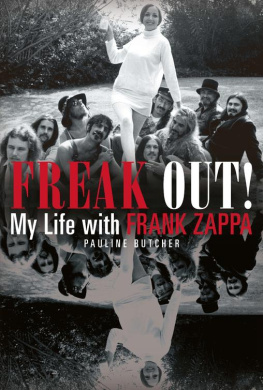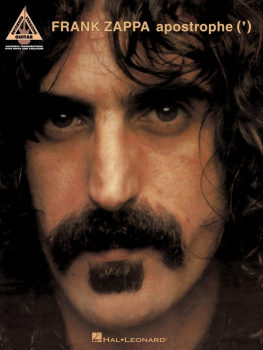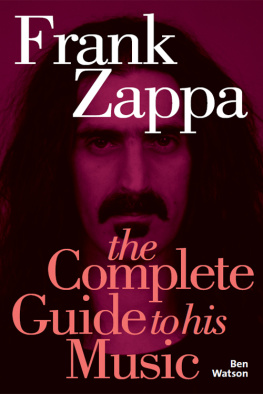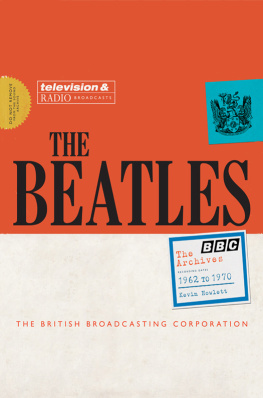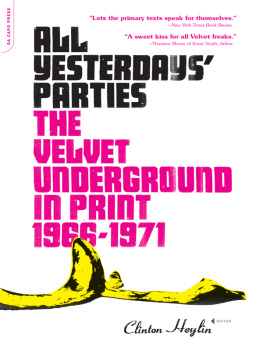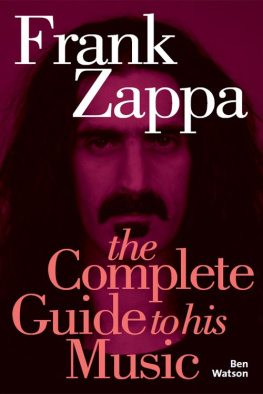
Also by DOYLE GREENE AND FROM MCFARLAND
The Rock Cover Song: Culture, History, Politics (2014)
Teens, TV and Tunes: The Manufacturing of American Adolescent Culture (2012)
The American Worker on Film: A Critical History, 19091999 (2010)
Politics and the American Television Comedy: A Critical Survey from I Love Lucy through South Park (2008)
The Mexican Cinema of Darkness: A Critical Study of Six Landmark Horror and Exploitation Films, 19691988 (2007)
Mexploitation Cinema: A Critical History of Mexican Vampire, Wrestler, Ape-Man and Similar Films, 19571977 (2005)
Rock, Counterculture and the Avant-Garde, 19661970
How the Beatles, Frank Zappa and the Velvet Underground Defined an Era
Doyle Greene

McFarland & Company, Inc., Publishers
Jefferson, North Carolina
LIBRARY OF CONGRESS CATALOGUING DATA ARE AVAILABLE
BRITISH LIBRARY CATALOGUING DATA ARE AVAILABLE
e-ISBN: 978-1-4766-2403-7
2016 Doyle Greene. All rights reserved
No part of this book may be reproduced or transmitted in any form or by any means, electronic or mechanical, including photocopying or recording, or by any information storage and retrieval system, without permission in writing from the publisher.
Front cover: 1967 publicity photograph of Frank Zappa and the Mothers of Invention (Photofest)
McFarland & Company, Inc., Publishers
Box 611, Jefferson, North Carolina 28640
www.mcfarlandpub.com
For Max Bassinson
Acknowledgments
Considerable thanks to Rodney Lynch and Matt Potts for the many discussions over the course of developing this project. Thanks are also owed to Jeni Lynch, Jack Joyce-Lynch, Ann Klee, Holly Benson, John Ray Link and Sophia Green, Steve Fier and Phanomvanh Daoheuang (Nacho and Nikki) and the Greene family (Earl, Hannah, and Danielle). A debt of gratitude is owed to the Departments of Political Science, History, Cultural Studies and Comparative Literature, and the Master of Liberal Studies program at the University of Minnesota; also, the Departments of Cinematic Arts (formerly Cinema and Comparative Literature) and Rhetoric at the University of Iowa. Special thanks for past and present advice to Joe Tompkins, Julie Wilson, Keya Ganguly, Gary C. Thomas, Carol A. Miller, Daniel M. Gross, Jack Zipes, Tom Conley, and especially Richard Leppert. My thanks also go to the many musicians Ive had the opportunity to work with over the years, as well as the artists and musicians I continue to have the privilege to be associated.
Preface
This book focuses on the Beatles, Frank Zappa, and the Velvet Underground from 1966 to 1970, concentrating on the Beatles later years, Zappas work with the original line-up of the Mothers of Invention and his early solo albums, and the course of the Velvets career trajectory. In related discussion, it examines John Lennons collaborations with Yoko Ono, the Zappa-produced album Trout Mask Replica by Captain Beefheart and the Magic Band, and The Marble Index, an album by former Velvets vocalist Nico which featured extensive contributions from another ex-Velvets member, multi-instrumentalist John Cale. While organized chronologically and around album releases, the textual analysis ranges from specific songs, cover art, methods of concert performance, work in other mediums (television in particular), and off-stage performances. Moreover, these texts are read within a historical context in order to examine how these performers negotiated rock music, the avant-garde, and the counterculture movement amid the political upheaval of the late 1960s.
In developing this project, it became a case where research determined the topic and not the other way around. As a teen in the 1970s, my preferred brands of rock music always tended towards art rockor, use a term with more critical panache, avant-rocknamely progressive rock bands from the early 1970s and post-punk bands by the late 1970s. Another way to put it is that during the 1970s I went from buying anything released on Virgin Records to anything released on Rough Trade Records. As my critical interest within the overall terrain of cultural studies moved further into popular music (and probably the nostalgia factor as well), I intermittently considered potential projects on prog rock, post-punk, and even a genealogy of art rock from prog rock to post-punk.
Three issues eventually emerged. One was covering some of that ground in my previous books Teens, TV and Tunes: The Manufacturing of American Adolescent Culture (2012) and The Rock Cover Song: Culture, History, Politics (2014). Second was establishing workable parameters. Books exhaustively focusing on a specific band or album risk becoming redundant and, at worst, can veer into fan mail disguised as critical engagement. Books assessing an entire musical genre and/or historical erawell-defined or notcan attempt to cover too much and short shrift the topic(s). I attempted to construct some sort of middle-ground as far as providing comparative analysis of selected but relevant case studies within a specific time-frame. The third issue became adequately contextualizing any project pertaining to prog rock, punk/post-punk, or some combination of the two necessitated examining rock music in the latter half of the 1960s. What began as developing a historical background became the central area of investigation. Moreover, the late 1960s were not only a crucial era of political unrest but a pivotal point in the constantly changing relationship between the avant-garde and popular culture. While I explored this area in Politics and the American Television Comedy: A Critical Survey from I Love Lucy through South Park (2008), rock music as much as TV stood out as an equally important convergence point.
Nevertheless, potential case studies inevitably needed to be whittled down as well. My first criterion was focusing on performers with name recognition, which entailed omitting lesser-known bands like the Monks, Red Krayola, Silver Apples, and United States of America. A second was excluding bands with more tenuous links to the avant-garde per se, such as the Doors, the Grateful Dead, MC5, the Nice, or 13th Floor Elevators. A third criteria involved performers whose careers did not cover a wide span of the late 1960s, such as the Stooges, Can, or King Crimsonall of whom released their debut albums in 1969. As the case studies developed, I came to the decision that, as modern architect Ludwig Miles van der Rohe put it, less is more. The focus narrowed to the Beatles, Zappa, and the Velvets. Despite some chagrin, as far as extended case studies I made final omissions of Pink Floyd and Soft Machine and consolidated discussion of Yoko Ono, Captain Beefheart, and Nico within the respective sections on the Beatles, Zappa, and the Velvets.
Ironically, Ive never been a devoted fan of the Beatles, Zappa, or the Velvet Underground and I never had the proverbial it changed my life moment when I first heard them. By way of disclaimer, Captain Beefhearts Trout Mask Replica was a revelatory album when I first heard it in the late 1970s and admittedly included for some purely personal reasons; however, TMR also merits discussion in the context of Zappas early career as well as being an avant-rock landmark in its own rightnor is it immune to criticism. Ultimately, one additional factor in determining the focus of this book was (hopefully) a sense of critical distance regarding the Beatles, Zappa, and the Velvets that may well have been lacking with longer case studies of Captain Beefheart or Soft Machine. I believe criticism functions best as with productive analysis and less so as passionate judgment for or against the object of study.
Next page

